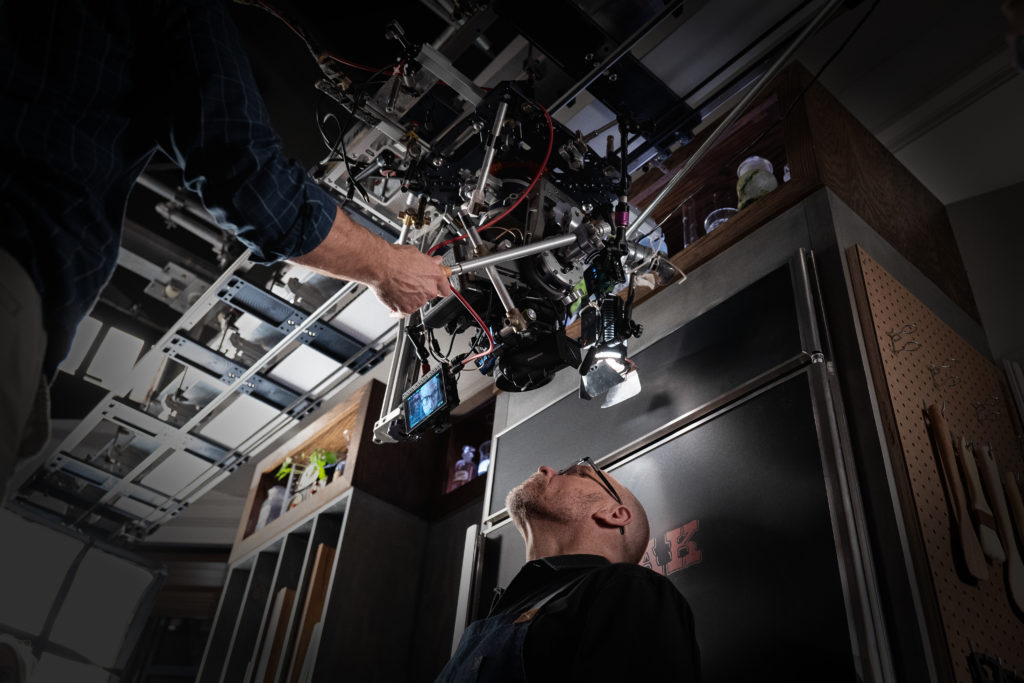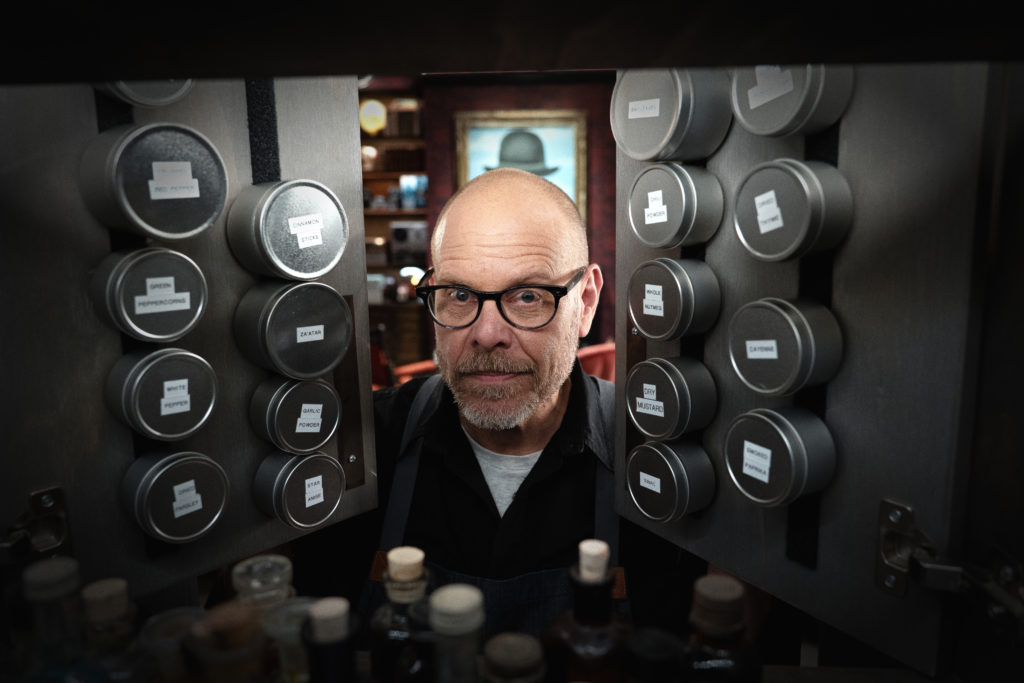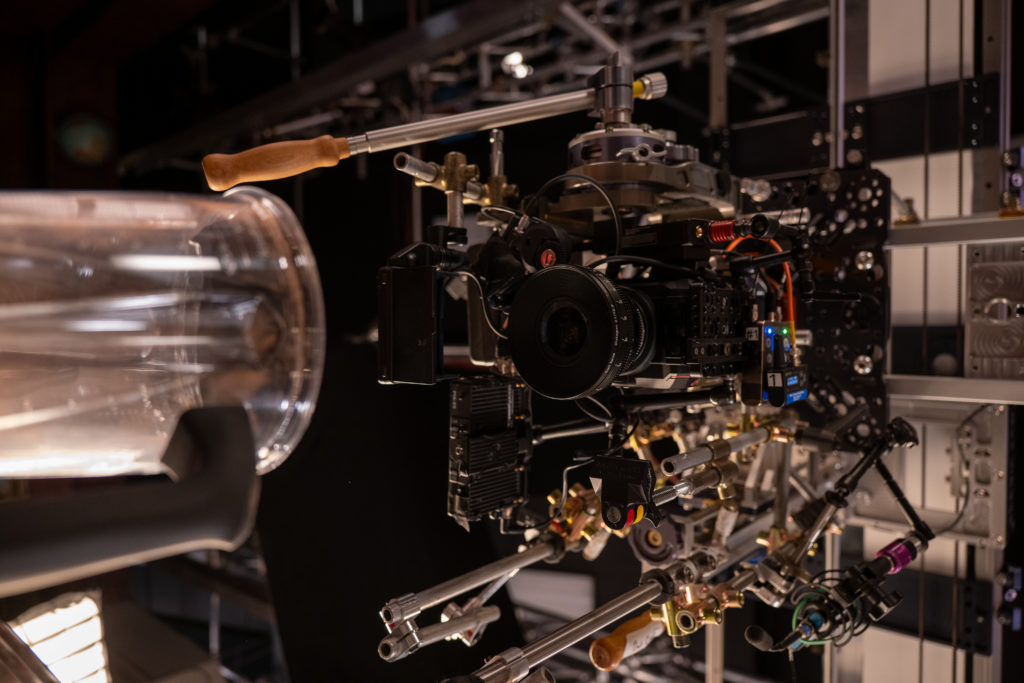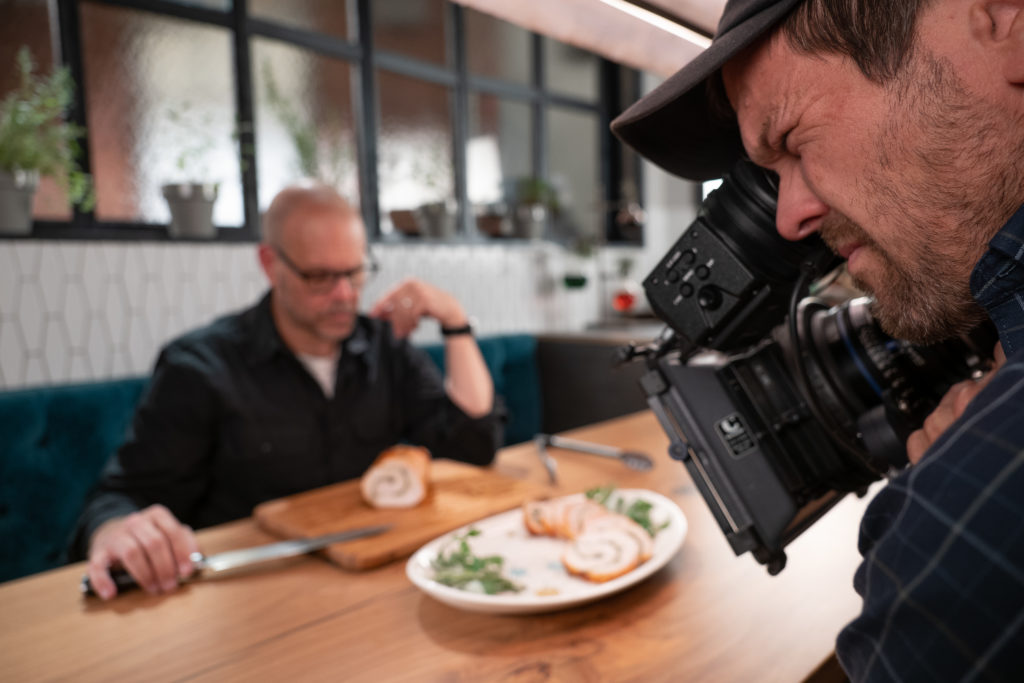February 6, 2020
5 min read
A combination of Julia Child, Mr. Wizard and Monty Python, Good Eats, created and hosted by Alton Brown, was a television cooking show that ran from 1999 – 2011 on the Food Network and Cooking Channel. In a bright and inventive way, Brown would explore the science and technique behind cooking, the history of foods, and would evaluate different kinds of cooking tools. After an eight-year hiatus, Good Eats re-launched as Good Eats: The Return on Food Network with a brand new look. The show is directed by Brown and shot with VariCam LT and AU-EVA1 cinema cameras by cinematographer Lamar Owen.
Brown is no novice when it comes to cinematography. Earlier in his career, he had shot a few music videos (including R.E.M.’s 1987 hit, The One I Love, directed by Robert Longo) and then moved on to shoot television commercials as both director and DP. “I think cinematography is a language and as a director I had to be at least proficient, if not fluent,” reveals Brown. “Since I started as a field cameraman in news, I always had my hands on the camera. And moving that device became an obsession, which is why I learned to lug around a Steadicam before I was even out of college. The only way I was able to take my hands off the camera was to stand in front of it, which seems to be where I’ve ended up.”

For the look of Good Eats: The Return, host and director Alton Brown wanted the set to feel as if the city was closing in around him.
For the re-launch of Good Eats: The Return, Brown and DP Owen wanted to do a complete 180 in bringing a new look to the series. According to Owen, even though it was the same basic layout of the original kitchen set, Brown wanted the set to feel as if the city closed around him and he was more in the city instead of a suburban home. “He [Brown] is very much a cinema guy,” explains Owen. “Like a Wes Anderson movie, he likes to have everything perfectly symmetrical and often center framed. In terms of color, a lot of the tones in the room are grays and blues and greens and things like that. So, the look of the show has more of a cool, neutral feel versus the warmer yellowish/red feel of the old show.”
“The look of the show was really a result of wanting something that felt it had evolved out of the original, to acknowledge that years have gone by and how that might visually be represented,” says Brown. “The set designer, Elizabeth Ingram, and I looked at frames from the BBC show Sherlock and Blade Runner [the 1982 original] to get an idea of how to create layers of age and use. We also watched more than our fair share of Wong Kar-wai films. After that, Lamar worked with gaffer, Stan Fyfe, to come up with a look that was richer, more contrasty and sourcey than the original.”

Brown was influenced by the perfect symmetry of framing in the films of director Wes Anderson.
Working with VariCam and EVA1
Good Eats: The Return is shot with EF-mount VariCam LT and EVA1 cinema cameras. Since Brown ultimately wanted to own his cameras, he and Owen visited AbelCine to demo both Sony and Panasonic cinema cameras. Owen liked the compact size of the VariCam LT and was impressed with its ergonomics. He also felt it was very user-friendly. Regarding the EVA1, Owen thought it would be an excellent B-camera to the LT, even though they didn’t plan on intercutting between the two cameras side-by-side.
According to Owen, FHD (1920x1080) resolution is the standard delivery requirement from Food Network but they capture and deliver in UHD (3840x2160) at 29.97-fps. Initially, Owen created independent LUTs between the VariCam LT and EVA1 but then he realized the LT LUT worked perfectly with the EVA1.

The AU-EVA1 shooting from above.
Since they are usually working in a studio environment, Owen typically shoots at Native 800 ISO for both cameras. He occasionally will utilize the 5000 ISO on the VariCam LT when shooting in a confined space. “It’s usually for the extra stop,” explains Owen, “but there were a couple of times where we were shooting green screen and we were concerned about depth of field and I needed to shoot at an f/8 versus an f/4 since I only had so much light. We shot a Casablanca inspired episode and a lot of those old movies used mad deep focus. I might have even shot an f/11 because I need for him [Brown] to be in the foreground and with another actor in the background – 10 to 12 feet away – to both be in focus.”
Owen shoots with a set of Zeiss CP.2 prime lenses, as well as a Canon Cine-Servo (17-120mm) zoom. He also doesn’t go wider than a 21mm unless they’re shooting in a confined space like inside a refrigerator. “Alton sometimes likes to work really close to the camera and since he’s familiar on both sides of the camera, he can position himself three feet away and hold something for the audience to see eight inches from the lens and hit it. If I tell him I’m on a 35mm, he’ll position himself right where he knows he should be in the frame.”

DP Lamar Owen framing a shot with the VariCam LT.
Lighting-wise, Owen uses a combination of LED and Tungsten instruments. Because he’s shooting in a smaller studio space he wanted to go with cooler lighting options since they shot a lot during the summer in Georgia. The studio has a bank of windows with a tight alleyway for Owen to hang lights to make it look like sunlight is raking in from the outside. “The best way was to hang Lekos on the edge so I could get this focused hard edge through the windows,” explains Owen. “We also ended up hanging Skypanels running at Tungsten as our key sources.”
The show is posted at Brown’s production company in Marietta, Georgia. According to Owen, the look remains pretty close to what he captures on set. “I would ask our colorist how much noise was visible since I can be a bit skeptical, but he would say, ‘Honestly, hardly any.’ I was pleasantly surprised at how the two native ISOs work.”
“The VariCam is just a great platform for a show like ours,” says Brown. “The size and weight make it highly versatile from a movement standpoint, and it pairs perfectly with the EVA1, which we use extensively. And of course, there’s the entire LUT side of the equation, which takes this system into an entirely different level from other cameras in its class.”
Watch a behind-the-scenes video of Good Eats: The Return
Watch full episodes of Good Eats: The Return here. (You will need a TV subscription to watch.)
If you want to learn more about VariCam LT and EVA1, visit here.
![]()
